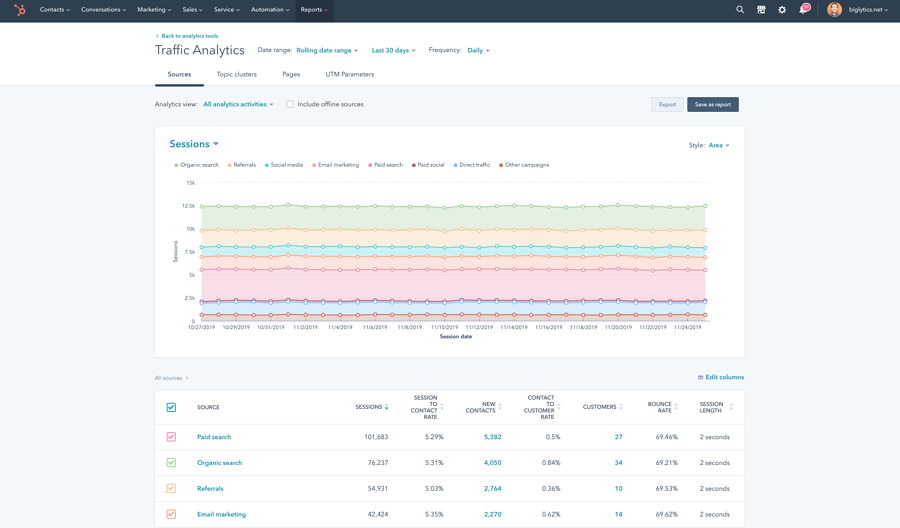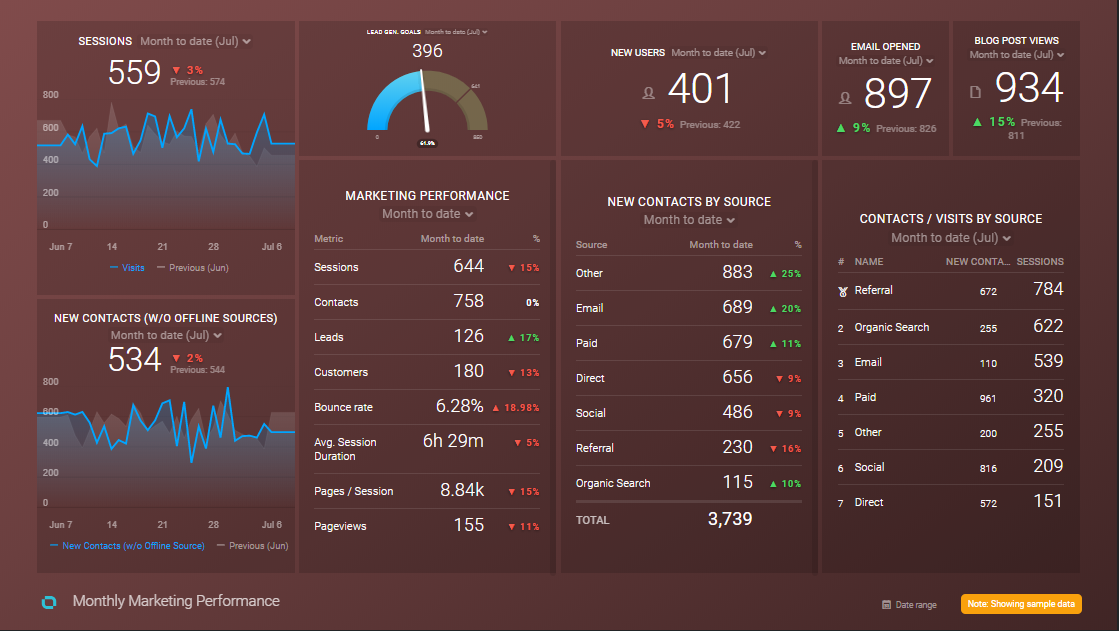-
Digital Marketing
We help you to use your digital potential. For a strong positioning, more visibility and more leads.
Get Growth ready
With the BEE.Transformance model, we bring continuous and profitable growth to your company. A new mindset for your team.
Industries
We transform your challenges into opportunities through the experience we have gained from projects in these industries.
-
HubSpot Services
As a HubSpot Diamond Partner, we help you implement your digital growth strategy with a focus on performance - by implementing and integrating new and existing systems as well as 3rd party apps.
HubSpot Thought Leader
As a HubSpot Diamond Partner with +50 certifications, host of the HubSpot User Group Zurich, HubSpot Trainer and HuSpot User Champions, you have access to in-depth HubSpot expertise.
HubSpot Solutions
The BEE.Theme offers you more creative freedom than any other theme on the market. Whether you're a beginner or a professional, a creative mind or a digital agency - with the BEE theme, you can easily unleash the maximum power for your pages in HubSpot CMS.
-
BEE.Blog
Knowledge around digital marketing, digital sales, technology, data intelligence and employees.
Knowledge Base
Pure knowledge: everything essential concentrated, compact, digitally prepared for you and ready to download.
What is inbound?
The most effective way to successfully combine digital marketing and digital sales.
-
BEE.Team
The BEE.Performers: many different characters - with one thing in common: the fascination for a digital world.
References
More than 100 large and small companies have already started with BEE: to more visibility, more performance, more growth.
Invest
Participate in the growth of BEE and become part of the BEE Growth Story by purchasing Digital Share Tokens.
We're hiring
Become a BEE.Performer! Are you ready for your own transformation?
Customer Reactivation: Why this strategy is so beneficial
Acquiring new customers can be a costly endeavour for businesses, but losing them is even more expensive. That's why you should really view your existing customers as an asset and figure out ways to get more return on investment (ROI) from them by preventing churn and reactivating customers that may have quietly disappeared from your frequent buyers' list.
To help your business grow steadily, your sales and marketing team will be under pressure to ramp up lead generation and conversion. Often, this requires plenty of resources, time and effort. But with so much of your attention focused on winning new business, could you be missing out on some seriously low-hanging fruit? Did you know, for example, that your existing customers are likely to spend 67% more with you?
By strategising on retention and running customer reactivation campaigns, you can amplify your sales and marketing efforts and quickly generate more income.
In this article, we will discuss what customer reactivation is, why it matters, and how to go about it most effectively.
What is customer reactivation?
The people and businesses that have already purchased from you are often super valuable. They've passed through your sales funnel, experienced your buyer's journey and committed to your product or service. After buying from you, however, their interest may have waned, or other priorities may have taken hold. This doesn't necessarily mean that the customer was dissatisfied with your brand; it may simply be that you've slipped off their radar. And this is where customer reactivation comes in.
Customer reactivation campaigns are used to reignite interest in your products or services with folks who have already bought from you by piquing their interest and getting them to re-engage with your brand.
When you re-establish contact with existing customers, you have a better chance of gaining their attention and winning back their business. Often, a reactivation campaign will use custom messaging, discounts, offers and special events to get them dialled back into your sales process.
What are the advantages of reactivation campaigns?
More revenue for your business
Reactivation campaigns have the potential to significantly boost your business's income. If a customer has had a positive experience with your brand before, they may potentially spend even more with you the next time around.
Let's be honest; acquiring new customers is always a hard slog — albeit necessary, admittedly. But suppose there's an opportunity to improve your revenue simply by paying attention to the folks you've already sold to. In that case, it makes sense that a significant portion of your efforts should shift towards customer reactivation.
Build on your existing relationships
Where's the best place to learn about the quality of service you provide and how you can make your brand more appealing to the ideal buyer persona? The people who have bought from you, of course!
By reviewing the insights gathered from your sales process and asking existing customers for feedback, you can optimise the buyers' journey. Inactive customers can also provide you with the information you need to ensure that future leads and customers remain engaged and don't drop off.
Snoop on your competitors
If an inactive customer has gone to one of your competitors, it's a good idea to find out why. If they're willing and open to talk to you about their experience, you may be able to identify the blind spots preventing you from holding on to your customers. Did the competitor offer better pricing, and was their customer support more thorough? All of this information can help you to enhance your business in a way that ensures you retain valuable customers for the long term.
Spend less on acquisition
Your sales team can capitalise on current customer/subscriber relationships by reactivating them for your business. Retaining existing customers is much more cost-effective than acquiring new ones; it requires fewer resources than the effort needed to minimise your churn rate. This means your sales team won't have to start from scratch when dealing with prospects they don't know, and customer loyalty will be prioritised.
How to reactivate existing customers
Now that we've discussed the value of enticing existing customers back towards your brand, let's take a look at what this may look like in action. There are many tactics you can implement, but here are a few you could get started with today:
1) Send out an email that reminds inactive customers why it was important for them to sign up in the past. What pain point drove them to look to your brand for the solution? Is it time to address other aspects of the challenge they were facing, and how can a complementary service or product help them to get even better results?
2) Offer an incentive through a coupon, a discount or a gift to show your appreciation for their loyalty. Everyone loves saving money or being offered something for free.
3) Have seasonal events that celebrate the anniversary of when someone signed up for the first time. Personalising your outreach and letting them know that they're a valued customer could be very effective in re-engaging customers.
Using HubSpot in your customer reactivation campaign
There are many tools that can help you to build and launch customer reactivation campaigns. But what you really need is a connected ecosystem that takes the data you have on existing customers (their preferences and interactions with your business) and then enables you to automate personalised outreach that continues to keep them plugged into your brand. And that’s exactly what HubSpot does.
At the heart of the HubSpot CRM's design is the inbound methodology and the flywheel — an approach to sales and marketing that focuses on the automated generation of new leads while delighting customers and building up a rich database of evangelists who love doing business with you.
HubSpot's automation features enable you to learn about your buyers through detailed segmentation. You can then use the insights to target existing customers with campaigns and strategies that keep them engaged and eager to purchase from you again.
The HubSpot suite of sales, marketing and customer service Hubs automate the inbound process through a series of lead generation tools and features such as:
- Forms
- Chatbots
- Personalisation tokens
- Smart content
- Lead Nurture Campaigns
- Sales Enablement
- Customer segmentation
- Ticketing
- …and so much more…
Essentially, HubSpot will help you to eliminate any friction points in your re-engagement campaign by ensuring you're targeting the correct audience segment that can then easily re-purchase from you without needing to do too much additional research or click through irrelevant webpages.
If you're keen to get more done with an intelligent, scalable business growth strategy, we cannot recommend HubSpot enough. Our implementation guide will help you learn more about the platform and what is possible for your business when you integrate this world-leading platform with your tech stack.
Download your free copy here and learn more about the benefits of a successful HubSpot implementation and how this can help you build your own inbound flywheel, drawing customers back to your business time and time again.
Related Posts

HubSpot Reporting: Best Practices and Things You Must Know
Yvette Veigel | 15 Sep 2022
Sales and marketing reports are powerful tools you can rely on when making essential business decisions and planning for the future. Each campaign you launch opens the ...
reading time: 10min
Zum Blog

Improved HubSpot Reporting with Databox
Katrin Zimmermann | 15 Dec 2022
Your business collects data from so many different sources. It's the blessing and the curse of the digital age we find ourselves in. On the one hand, you have more ...
reading time: 7min
Zum Blog

What You Need to Know About HubSpot Revenue Attribution
Yvette Veigel | 31 Aug 2023
If you put 1 Euro into a machine and got 2 Euro back, you'd keep putting your money in that machine, right? That's the essence of why marketing and sales professionals ...
reading time: 9min
Zum Blog
